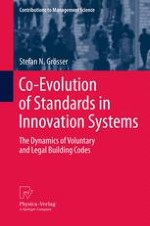2013 | OriginalPaper | Buchkapitel
4. Swiss Residential Built Environment
verfasst von : Stefan N. Grösser
Erschienen in: Co-Evolution of Standards in Innovation Systems
Verlag: Physica-Verlag HD
Aktivieren Sie unsere intelligente Suche, um passende Fachinhalte oder Patente zu finden.
Wählen Sie Textabschnitte aus um mit Künstlicher Intelligenz passenden Patente zu finden. powered by
Markieren Sie Textabschnitte, um KI-gestützt weitere passende Inhalte zu finden. powered by
